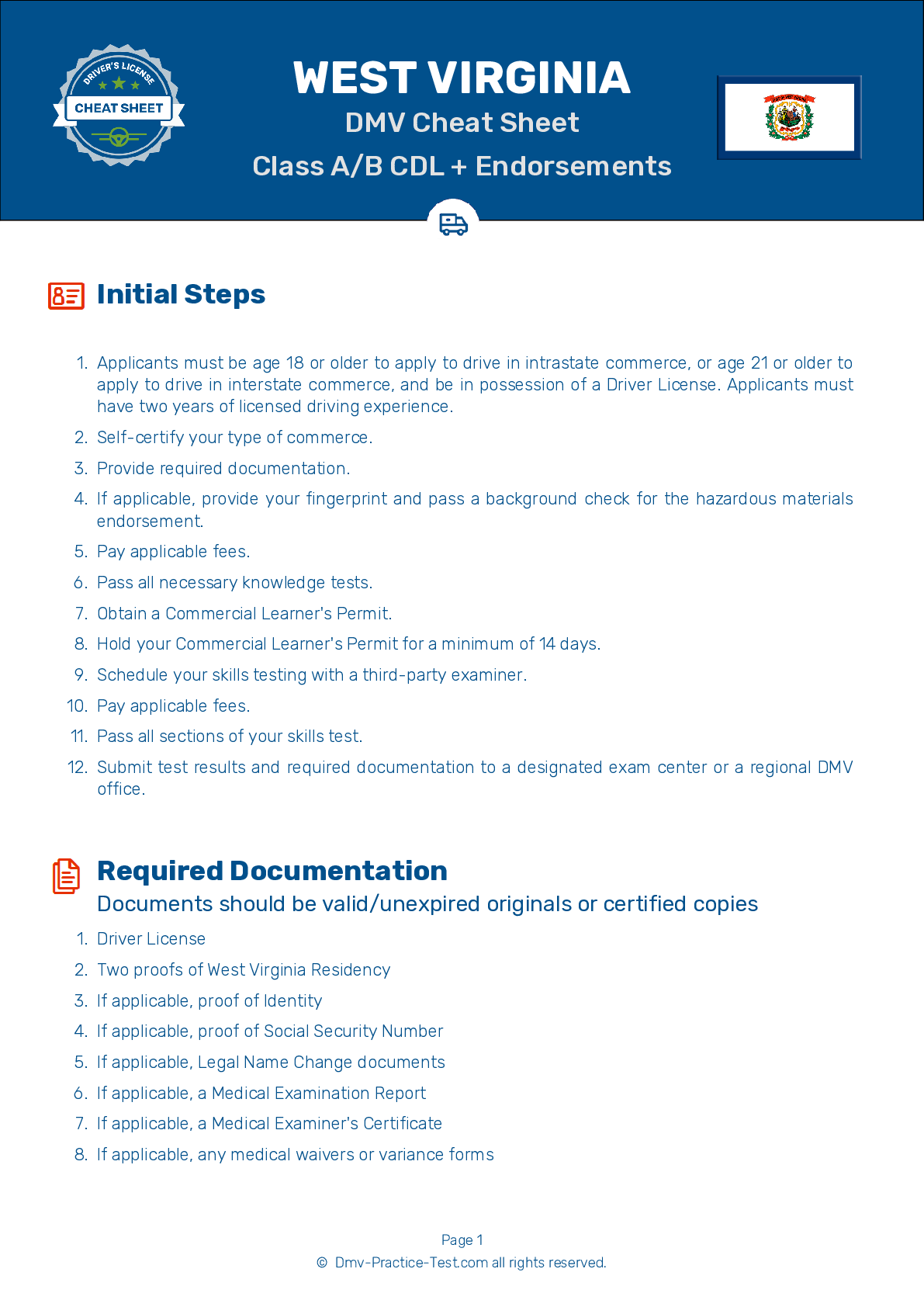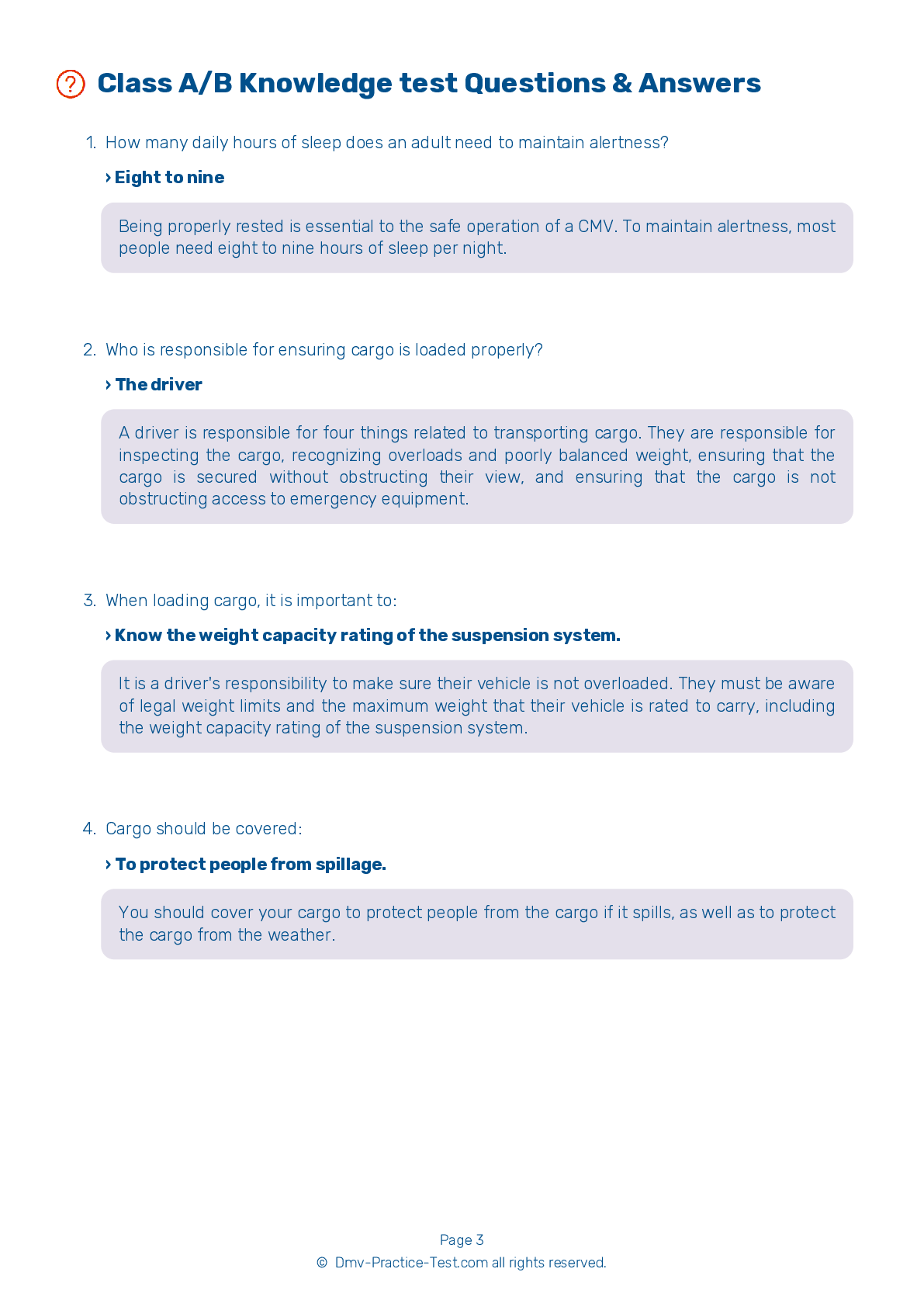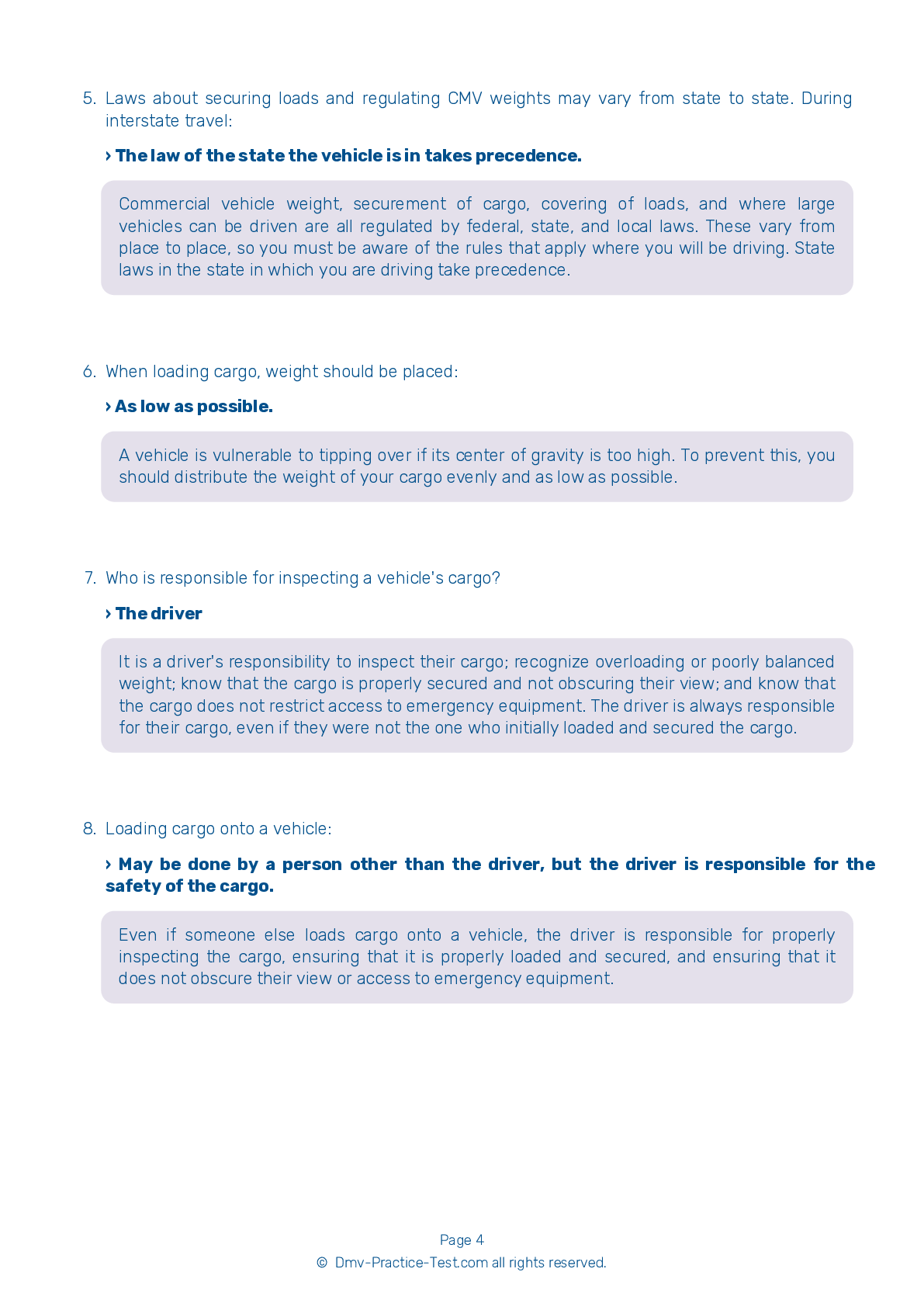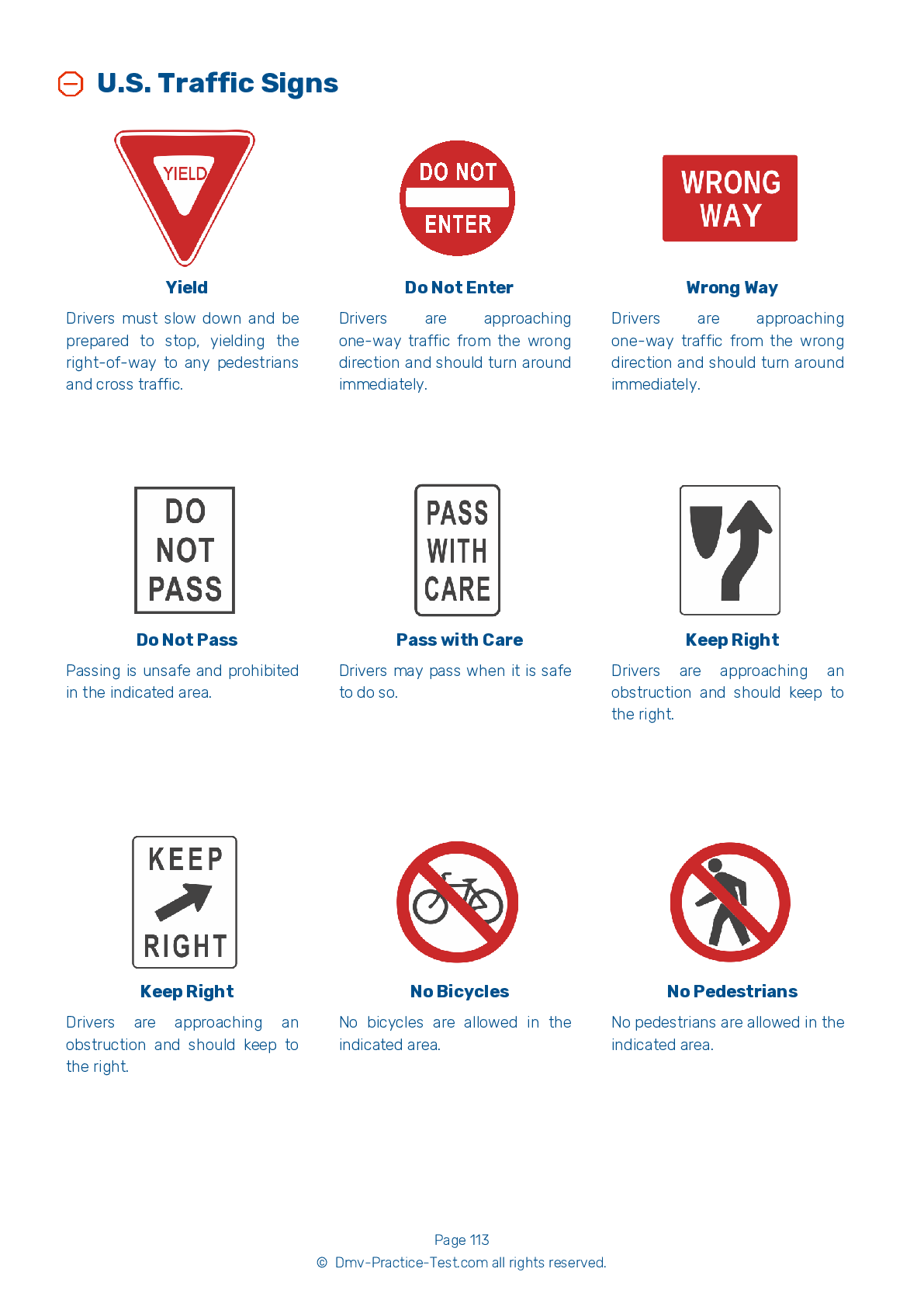Class A Driving Test | West Virginia 2025 #1 Page 3 of 7
Train for FREE online with our West Virginia class A license test. The official exam test consists of several obligatory parts, with all of them checking your knowledge of different blocks of road rules. If you need to obtain a WV CDL class A permit in 2025, practice as much as possible. Free sample tests published on our website will help you check and improve your knowledge and boost your grades. Please bear in mind that CDL class A requirements may vary from state to state.
15 . Loading cargo:
Regardless of who has loaded cargo onto a vehicle, the driver is responsible for the safety of the cargo.
16 . Backing with a trailer is dangerous because:
Backing up is always dangerous because it is impossible to see everything behind your vehicle. If you must drive in reverse, use a helper, if possible.
17 . What is the only way to sober up after drinking?
The liver removes alcohol from the body at a fixed rate that cannot be increased through tricks like drinking coffee or taking a cold shower. The only way to sober up after drinking is to wait for the alcohol to be removed from your system.
18 . If you’re feeling tired before a drive, you should:
Stimulant drugs, including caffeine, are not helpful as a way of avoiding fatigue. They may help keep you awake, but will not make you any more alert. Feeling tired is a sign that your body needs sleep, and the only way to properly address it is to stop driving and get some sleep.
19 . How many points will be added to your driving record for littering?
In West Virginia's point system, littering incurs three points on a driver's record. If a driver accrues 12 points or more, their license will be suspended.
20 . Emergency equipment, such as a fire extinguisher, is:
All commercial motor vehicles are required to be equipped with the proper emergency equipment. This may include spare electrical fuses; three red reflective triangles, six fuses, or three liquid burning flares; and at least one properly charged and rated fire extinguisher.
21 . When starting a trip while transporting a load, the driver should:
The securement of cargo must be checked before beginning a trip, within the first 50 miles of a trip, and then again every three hours or 150 miles thereafter.
See the exact questions that will be on the 2025 West Virginia DMV exam.
99.2% of people who use the cheat sheet pass the FIRST TIME
Lillian MCcranie explains how our CDL study guide was helpful in passing the exam and recommends it to everyone.
Cameron tells us how he purchased the CDL exam, and found it to be a useful tool which helped him pass the exam and find a job.



